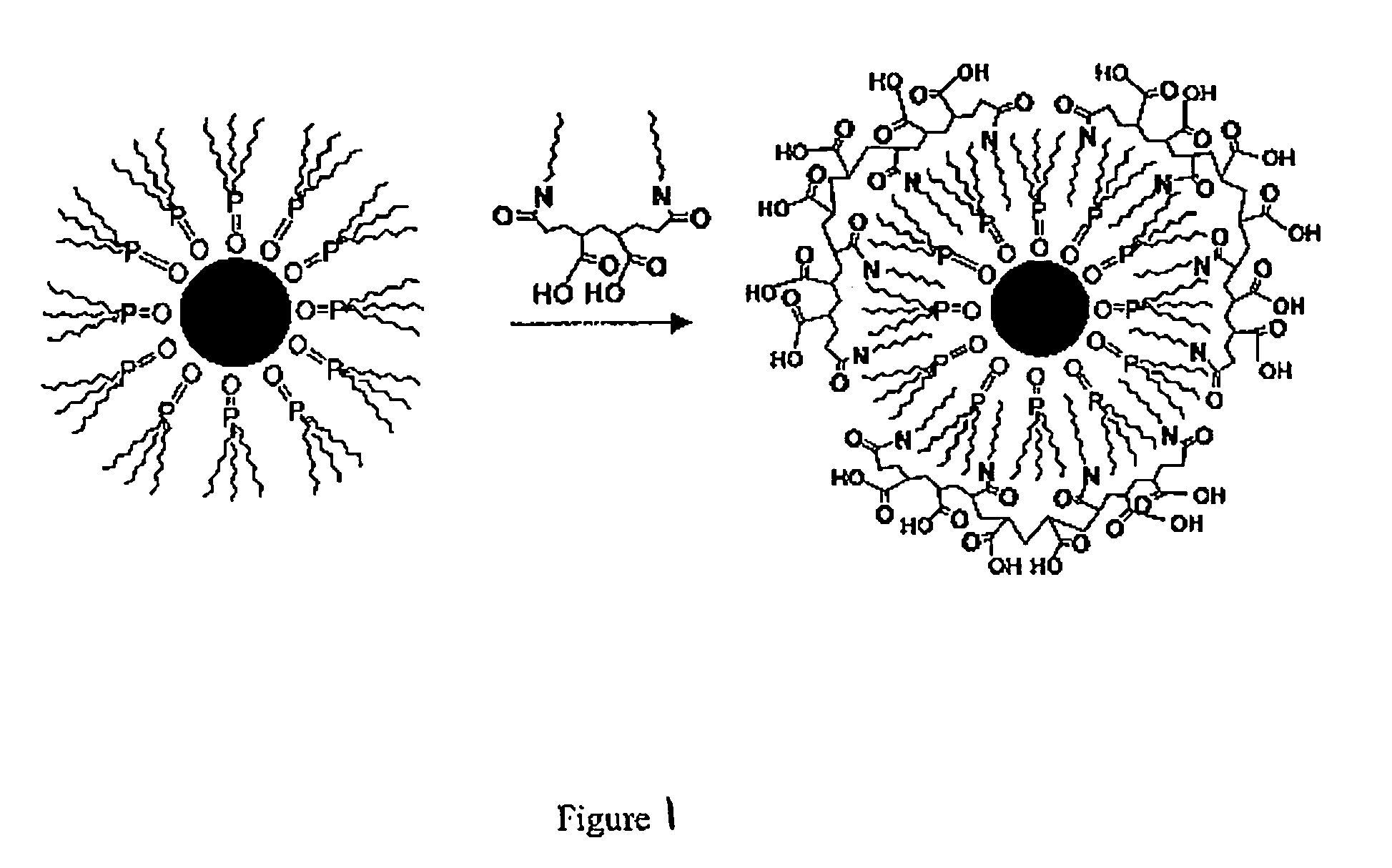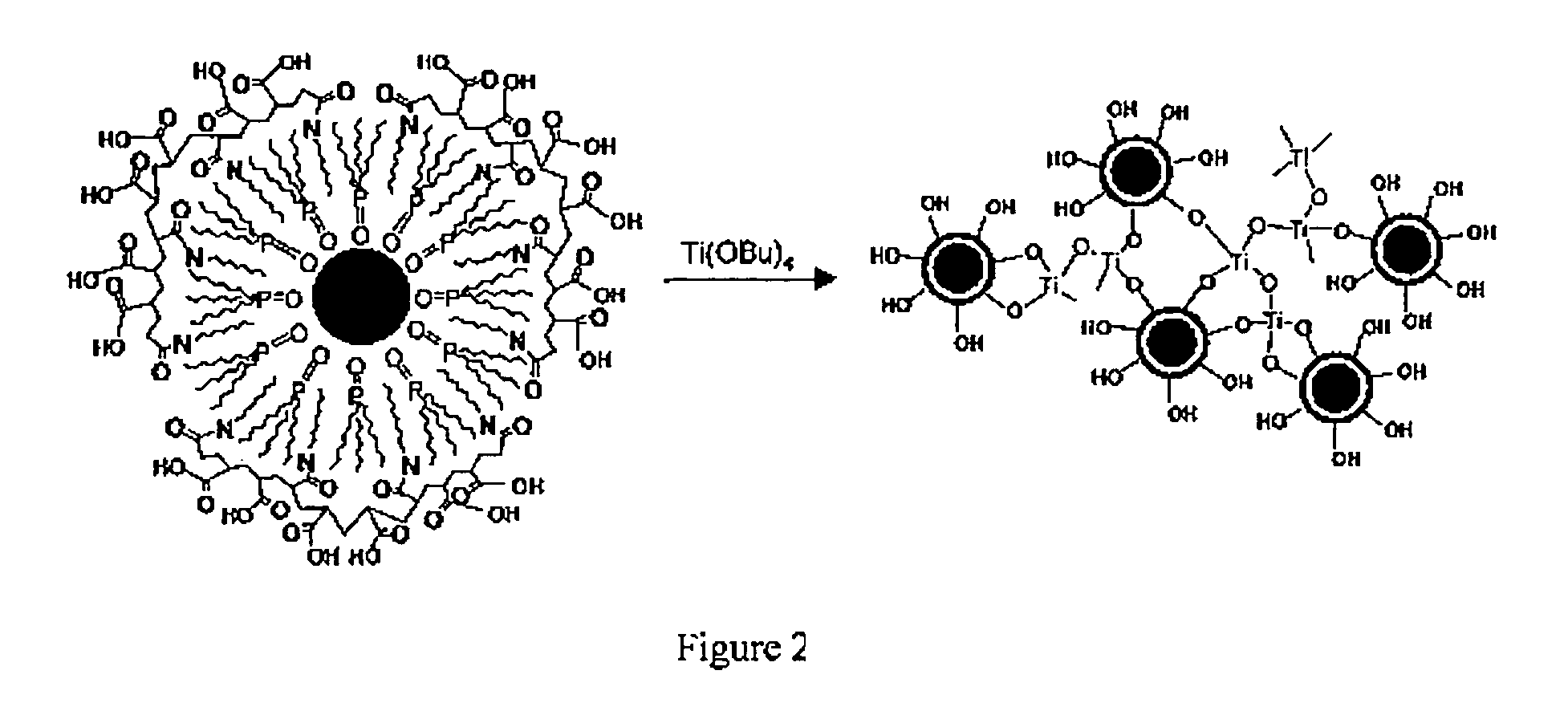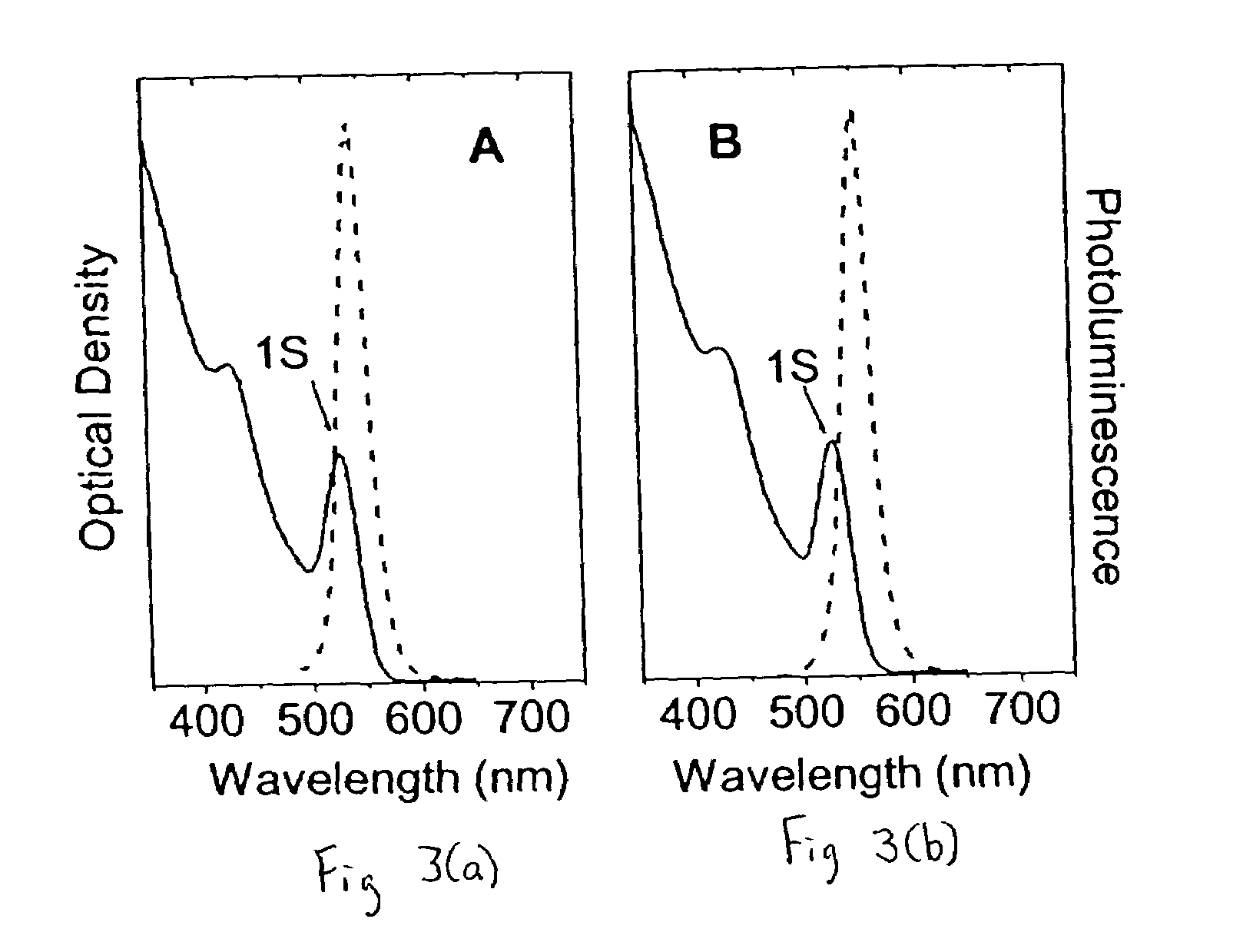Nanocrystal/sol-gel nanocomposites
a technology of nanocomposites and nano-sol-gels, which is applied in the direction of colloidal chemistry, other chemical processes, separation processes, etc., can solve the problems of large size dispersities, low filling factors, and poorly controlled surface passivation of materials
- Summary
- Abstract
- Description
- Claims
- Application Information
AI Technical Summary
Problems solved by technology
Method used
Image
Examples
example 1
[0046]A polymeric ligand, 40% octylamine-modified poly(acrylic acid), was prepared as described by Wang et al., Polymer Bull., v. 20, 577 (1998). To prepare titania sols, a solution of the polymer in chloroform was mixed with a solution of the colloidal nanocrystals in chloroform, which had been isolated from their growth media by precipitation. The polymer solution was gradually added to the solution of the colloidal nanocrystals. When an appropriate amount of polymer was added, the colloidal nanocrystals became soluble in ethanol. The colloidal nanocrystals were found not soluble in water. The chloroform was evaporated, and the colloidal nanocrystals were taken into an inert atmosphere dry box. Ethanol (and when necessary for complete dissolution a small amount of tetrahydrofuran) was added to the colloidal nanocrystals to solubilize them. Following the addition of titanium(IV) butoxide (1:1 colloidal nanocrystal / titania mass ratio), the solution was allowed to stir for up to two ...
example 2
[0049]The polymeric ligand, 40% octylamine-modified poly(acrylic acid), as in Example 1 was used with PbSe colloidal nanocrystals (prepared in accordance with Wehrenberg et al., J. Phys. Chem. B, vol. 106, pp. 10634-10640 (2002) and Murray et al., IBM J. Res. Dev., vol. 45, no. 1, pp. 47-56 (2001)). To prepare titania sols, a solution of the polymer in chloroform was mixed with a solution of PbSe colloidal nanocrystals in chloroform, which had been isolated from their growth media by precipitation. When an appropriate amount of polymer was added, the colloidal nanocrystals became soluble in ethanol. The chloroform was evaporated, and the colloidal nanocrystals were taken into an inert atmosphere dry box. Ethanol (and when necessary a small amount of tetrahydrofuran) was added to the colloidal nanocrystals to solubilize them. Following the addition of titanium(IV) butoxide (1:1 colloidal nanocrystal / titania mass ratio), the solution was allowed to stir for up to two hours at room tem...
example 3
[0051]The polymeric ligand, 40% octylamine-modified poly(acrylic acid), as in Example 1 was used with InAs colloidal nanocrystals. To prepare titania sols, a solution of the polymer in chloroform was mixed with a solution of InAs colloidal nanocrystals in chloroform, which had been isolated from their growth media by precipitation. When an appropriate amount of polymer was added, the colloidal nanocrystals became soluble in ethanol. The chloroform was evaporated, and the colloidal nanocrystals were taken into an inert atmosphere dry box. Ethanol (and when necessary a small amount of tetrahydrofuran) was added to the colloidal nanocrystals to solubilize them. Following the addition of titanium(IV) butoxide (1:1 colloidal nanocrystal / titania mass ratio), the solution was allowed to stir for up to two hours at room temperature. The solution was then filtered and spin-coated onto a glass substrate and the films allowed to dry in air overnight.
PUM
| Property | Measurement | Unit |
|---|---|---|
| size | aaaaa | aaaaa |
| surface roughness | aaaaa | aaaaa |
| volume fraction | aaaaa | aaaaa |
Abstract
Description
Claims
Application Information
 Login to View More
Login to View More - R&D
- Intellectual Property
- Life Sciences
- Materials
- Tech Scout
- Unparalleled Data Quality
- Higher Quality Content
- 60% Fewer Hallucinations
Browse by: Latest US Patents, China's latest patents, Technical Efficacy Thesaurus, Application Domain, Technology Topic, Popular Technical Reports.
© 2025 PatSnap. All rights reserved.Legal|Privacy policy|Modern Slavery Act Transparency Statement|Sitemap|About US| Contact US: help@patsnap.com



